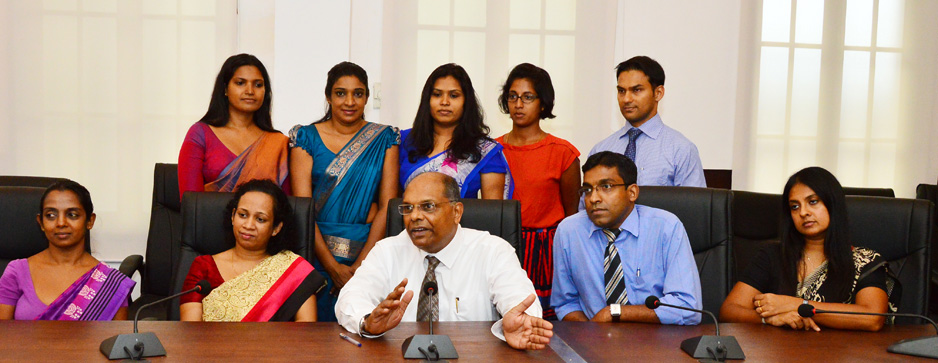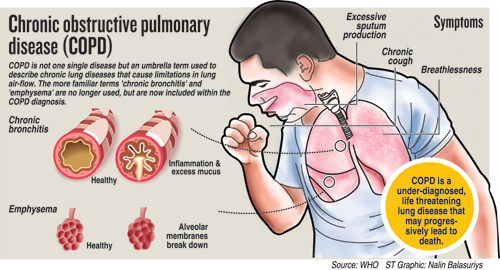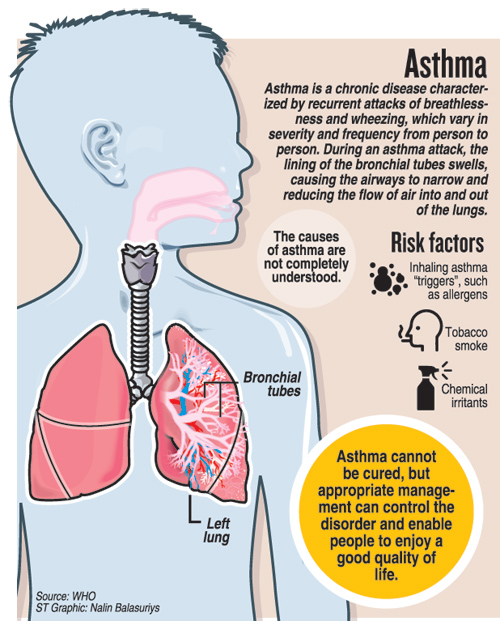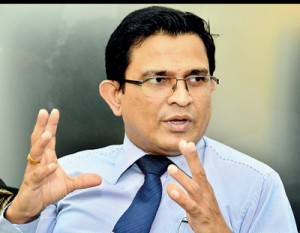News
Action plan to combat COPD an urgent need
Are Sri Lankans gasping for breath?
A red star on Sri Lanka in the world map is giving out a strong signal that the country is in the “high prevalence” category for asthma, allergies and chronic obstructive pulmonary disease (COPD).

The study team: Dr. Kirthi Gunasekera (centre) is flanked by (seated from left) Dr. Suharshi Silva, Dr. Wathsala Gunasinghe, Dr. Aflah Sadikeen and Dr. Yamuna Rajapakse. Back row from left are Dr. Jayani Menike, Dr. Pabashi Abeysooriya, Dr. Kalani Abeywardene, Dr. Meera Kamalanathan and Dr. Riaz Mowjood. Pix by Indika Handuwala
More than 28% of Sri Lankan children, or 1 in 3, “alarmingly” fall into the wheezing category but this figure dropped to 10% when asked about being diagnosed with asthma as there is a denial and under-diagnosis component, the Sunday Times learns.
In the 28% of children, half had severe symptoms and of this group half did not even know that they had asthma. As such they were not on any medication, which was dangerous.
Of more than 24.5% of adults who had wheezing, fewer than half were taking treatment which is “worrying” in view of the high death rates recorded due to asthma, it is learnt, while Sri Lanka has shown a COPD prevalence of 10.5%, one of the highest in Southeast Asia.
This is just the tip of the iceberg of airway diseases in children and lung diseases in adults that a countrywide meticulous study conducted by a team headed by Consultant Respiratory Physician Dr. Kirthi Gunasekera has uncovered. The study was carried out in a bid to get a crystal clear image of the burden of these diseases. (See box)
These are the “significant” findings of the time-trends 15-year study, part of two worldwide research efforts, that Dr. Gunasekera presented to a distinguished but hushed audience on Thursday at the inauguration of ‘Respire 7 – Respiratory Medicine Reaching New Frontiers’ at the Hotel Galadari in Colombo.
He was delivering the C.G. Uragoda Oration 2015 titled ‘Burden and Epidemiology of Airway Diseases in Sri Lanka: A Nationwide Study’.
Giving the backdrop of the study, Dr. Gunasekera pointed out that though a majority of deaths are due to non-communicable diseases (NCDs), “sadly there had been no focus on the respiratory disease component of NCDs”.
Although as clinicians, Respiratory Physicians saw the burden, there had been no data and as such no one knew how big or small the issues of respiratory diseases were. An indirect indicator of demand had been the progressive incremental sale of asthma drugs.
“Unfortunately, an emergency stop-gap is nebulisation which is not a good thing because long-term treatment was not being carried out, even though the prevalence seemed high,” he said.
But global figures were giving pointers – 300 million people were asthmatics worldwide, with Sri Lanka having an ‘estimated’ one million asthmatics.
There were also a few clues from within Sri Lanka – of the 200,000 asthmatics admitted to State hospitals annually, roughly there were about 1,000 deaths, the Sunday Times learns.
“This was quite a high figure, similar to some developed countries,” said Dr. Gunasekera.
Worried he was, about the lack of data and although a major worldwide study – International Study of Asthma & Allergy in Childhood (ISAAC) to compare prevalence and severity of asthma in different countries — had been launched in 1994, Sri Lanka was not equipped to join it as there was no one to carry out the work at ground level.
Under this study, Australia, Germany, Britain and the United States of America had joined forces to ascertain the prevalence of asthma and allergies and get standardised readings as opposed to individual countries conducting studies in isolation, it is understood.
It was a meeting in 1997 in New Zealand in which Dr. Gunasekera was participating that propelled him towards undertaking the onerous task of being part of the Phase III of ISAAC – “a re-run to look at the trends of asthma” in the year 2000.
Phase II had been more invasive, with blood tests being taken to determine the aetiology of asthma and was exhaustive and costly.
Multi-disciplinary care required to counter NCDsAs the Sri Lanka College of Pulmonologists (SLCP) met over Friday and Saturday to discuss many angles and latest developments of their “finer” speciality of respiratory medicine, a highlight was also the all-important multi-disciplinary care of their patients.  Dr. Eshanth Perera Pointing out that now Sri Lanka boasts of 36 Chest Physicians serving in all areas, SLCP President Dr. Eshanth Perera stressed that in the light of a rise in non-communicable diseases including chronic respiratory diseases, the inputs of other specialtie was essential. “The multi-disciplinary approach is the way,” he said, citing the example of some lung diseases when the medical team should include essentially a chest physician and others such as an oncologist, a rheumatologist, a radiologist, a thoracic surgeon and a histopathologist. The SLCP’s scientific sessions were inaugurated on Thursday with the Chief Guest being Prime Minister Ranil Wickremesinghe. The Guest-of-Honour was the Chair of the Research Committee of the Asian Pacific Society of Respirology, Prof. Chunxue Bai from China who is also Director of the Shanghai Respiratory Research Institute. While the two days saw two plenaries, the 12 parallel sessions included a look at Obstructive Airway Disease; Pleural Disease; Lung Cancer; Sleep and Pulmonary Critical Care; Pulmonary Infections; Pulmonary Vascular Disease; Environmental & Occupational Lung Disease; and Diffuse Parenchymal Lung Diseases. There was also a vibrant interaction during the ‘Meet the Expert’ session. The SLCP’s efforts are not limited to conducting successful sessions but are also being channelled towards setting up a Research and Training Centre on Respiratory Diseases on land promised by the Health Ministry at the National Hospital for Respiratory Diseases at Welisara. “It is not only medical staff that we need for the all-round care of patients with lung disease but also nursing and paramedical staff,” said Dr. Perera, adding that setting up the centre as soon as possible would help train them. This, in turn, would expedite the introduction of new diagnostic and therapeutic measures for the benefit of the patients. |
Seeing the world map with no dot or star on Sri Lanka which showed the degree of asthma prevalence in other countries, was the catalyst for him to get involved in Phase III, he says.
Explaining why the ISAAC asthma study focused on children, this Respiratory Physician points out that in adults, COPD could mimic asthma and could very well get labelled as asthma. In children, wheezing was a clear indicator that it could be asthma.
However, in the second part of the study conducted in 2013-14, not only did his team re-visit the figures of the 2000 study on children, but also expand it to cover the prevalence of asthma, COPD and sleep apnoea in adults.
While in most countries, the research was carried out in one centre, the local team did an all-island survey which was a more representative and comprehensive sample, it is learnt.
In the initial study of October 2000, 25 medical students, after training, had fanned out across the country armed with questionnaires and televisions, being in the field for three months gathering data.
“We negotiated with the Liberation Tigers of Tamil Eelam and conducted the study even in areas which were under LTTE control at that time,” says Dr. Gunasekera.
It was a long process with the questionnaires in both Sinhala and Tamil to suit the particular group they were targeting, 7,200 children in all, in two age-groups in 400 schools. Parents spoke on behalf of the younger children, while the older ones did so themselves.
The main question that they were asked was whether they had wheezed in the past 12 months, says Dr. Gunasekera, adding that this was the standard method as it was “recent recall”. The follow-up question was whether they had ever been diagnosed with asthma.
Next came the video, depicting five asthma-related scenes followed by the queries: “Could you talk in sentences during the wheezing? Did you wake up in the night due to wheezing? Have you had four or more such strong wheezing attacks in the past 12 months?” The answers helped the team gather proof on bad wheezing.
Now that there are solid findings, the need of the hour is for Sri Lanka to have an action plan to combat these diseases linked to the lungs.
| Data from 2000 study The other data from the 2000 study on children are: - 30% of the children in the wheezing group did so after exercise. - 30% of all children surveyed suffered from rhinitis. - 10% of all children surveyed had eczema. - Although asthma is believed to be an urban malaise, the Sri Lankan study found no significant difference between urban and rural groups. The follow-up study of 2013-14 had also been carried out in the same 400 schools although a different group, with the earlier child participants moving out of the required age category. An additional component of the study had been spirometry (a test to assess lung function) being performed on the older group of children. - This time round, data had shown the trend of wheezing among children coming down, but still being above 20%. Spirometry had also been part of this study and the highly-specialised data had been sent to international centres for analysis. This study had revealed: In the sleep study: COPD made 25,000 people get admitted to State hospitals annually with 1,000 deaths recorded. “So this is a more sinister disease than asthma,” he stresses. Now the study has revealed a figure of 10.5% of COPD sufferers. This is closer to the high-point of the global range which varies from 4-12%. Usually, though COPD is mainly linked to smoking, the Sri Lankan study has found a large number of COPD sufferers to be non-smokers and females. Then arises the question: Why? Is it being caused by biomass fuels, exposure to dust and fumes in jobs or due to passive smoking, we need to find out, said Dr. Gunasekera. |

